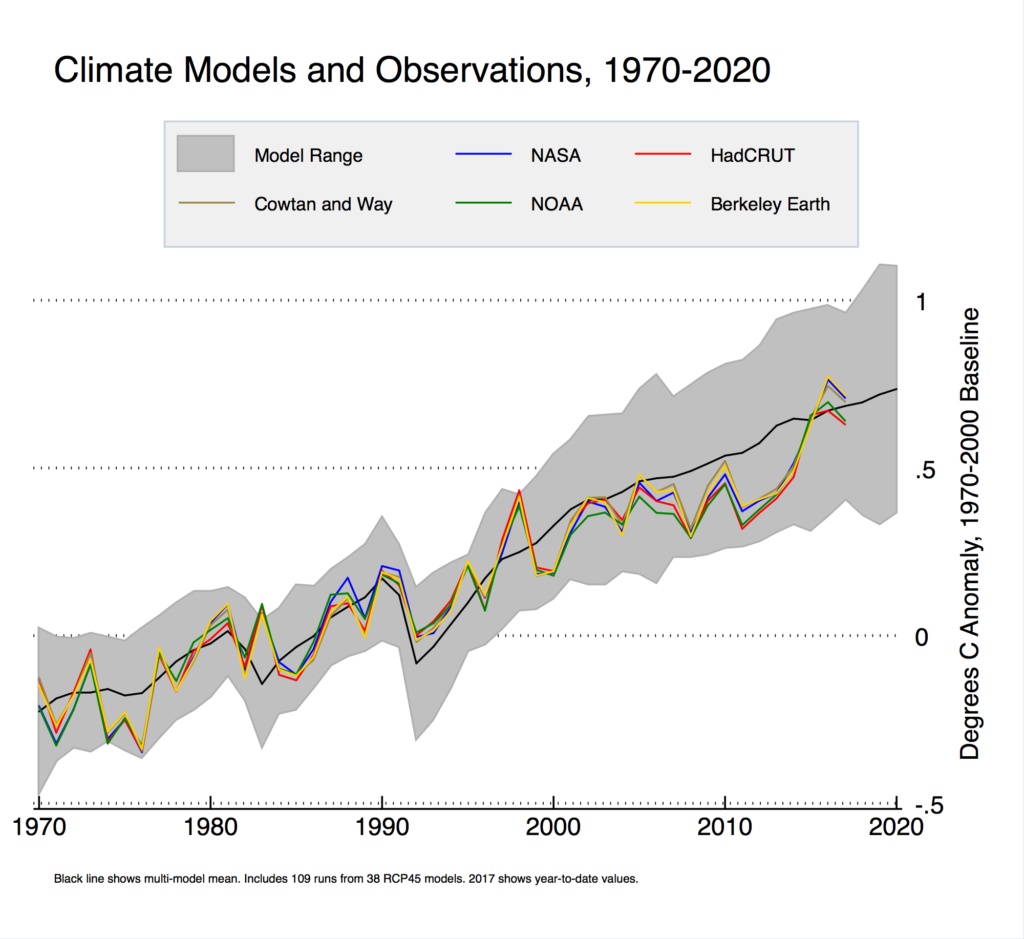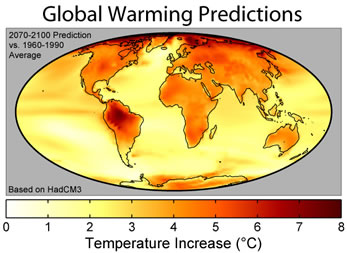By Kent R. Kroeger (Source: NuQum.com, September 21, 2017)
{ Feel free to send any comments about this essay to: kkroeger@nuqum.com or kentkroeger3@gmail.com}
One reason science remains human advancement’s greatest engine is its subjection to empirical evidence for confirmation of its assumptions, models and theories.
Regrettably, since science is conducted and reported by humans — at least for now — it is subject to many analytic biases including measurement error, selection bias, peer pressure, reputation protection, partisan politics, and peer pressure. Scientists are vulnerable. Journalists are vulnerable. Even the Pope and Al Gore aren’t immune.
Moreover, the politicization of science fosters a dysfunctional social dynamic between experts, politicians and stakeholders, each bringing different, sometimes contradictory, motives and interests to the public discourse. Journalists want attention-grabbing headlines, activists need to raise money, scientists are competing for government research grants, and politicians must cater to their constituents.
The resulting stew can bury real science under layers of misinformation, bias, partisanship and deceit.
With the latest minor controversy in the climate science community, we see many of those analytic solecisms and social dynamics in action.
The latest scientific rumpus started with the release of a new climate study, Emission budgets and pathways consistent with limiting warming to 1.5 °C, by Richard J. Millar, et al., and published in the September 2017 issue of Nature Geoscience.
And what did they find?
In their words: “We show that limiting cumulative post-2015 CO2 emissions to about 200 gigatonnes of carbon (GtC) would limit post-2015 warming to less than 0.6 °C in 66% of Earth system model members of the Coupled Model Intercomparison Project (CMIP5) ensemble with no mitigation of other climate drivers, increasing to 240 GtC with ambitious non-CO2 mitigation.”
Using more layman terms, they write, “assuming CO2 emissions peak and decline to below current levels by 2030, and continue thereafter on a much steeper decline, [global temperatures will peak at] 1.2–2.0 °C above the mid-nineteenth century [pre-industrial] levels.
No single study is the last word on global warming, and the Millar,et al. study did not find anything contradicting previous warming forecasts, including those reported in the Intergovernmental Panel on Climate Change’s Fifth Assessment Report in 2013. However, the study did report, after 2020, the CMIP5 ensemble-mean human-induced warming is over 0.3 °C warmer than the central estimate for human-induced warming to 2015.
Let the conservative media’s misinterpretations begin. When the study’s results were reported in the UK’s Daily Mail, the headline read:
Now that’s an inconvenient truth: Report shows the world isn’t as warm as the green doom-mongers warned. So will energy bills come down?
The Daily Mail gets a A+ for headline creativity and a D- for headline accuracy. Once the mainstream news outlets took hold of the Millar et al. study, all interpretational control of was lost.
The problem is the Millar et al. results are influenced by the climate model outputs and observational temperature measurements selected in their analyses. Furthermore, the authors did not intend for their paper to be an estimate of current model/observation temperature differences, but was instead focused on global carbon cycle accuracy.
As for the news media, they serve a different master than climate scientists and the rash conclusion (no matter how wrong) that the climate models are exaggerating the extent of global warming was just too “newsworthy” to ignore, at least for the conservative-leaning media. News on the Millar et al. study was nowhere to be found in the liberal-leaning news outlets.
But the ‘models are wrong’ interpretation of Millar et al. is not accurate, even if understandable given the somewhat confusing way Millar et al. summarized their findings.
The website CarbonBrief.org offers an excellent critique of Millar et al. and offers the following, presumably more accurate, conclusion:
The results of model/observation comparisons differ greatly based on the dataset used, the model outputs analysed – model air temperatures or blended model air/ocean temperatures – and the time period examined. While the Millar et al study points out some sizable differences between the HadCRUT record and the model air temperature field, this should not be generalised to conclude that warming projections are unreliable or that warming has been ‘exaggerated by faulty models’. The paper’s real focus is on carbon budgets and carbon cycle accuracy, rather than model/observation comparisons of the warming associated with increased atmospheric greenhouse gas concentrations, and their results have little bearing on our understanding of climate sensitivity.
As a statistician (and not a climate scientist), I will defer to Carbon Brief’s expertise on the methodological issues regarding the measurement of global temperatures over time. Climate science has a long history of measurement issues and controversies. But the plotting and interpretation of time-series data is an area where I do have some experience, and in this regard, I am puzzled at to why climate scientists repeatedly shutdown public discussions over the uncertainty inherent to global warming models and forecasts.
WE KNOW HOW FAST THE PLANET IS WARMING, BUT THE QUESTION REMAINS: DO WE KNOW HOW SENSITIVE THIS WARMING IS TO THE POLICY OPTIONS AVAILABLE TO US?
The graph below comes from CarbonBrief’s website and shows the time-series plotting of five selected climate observation methods and the average of the forecast models (black line) between 1970-2020 for global temperatures. The gray shaded area indicates the models’ forecast ranges.
Since 1970, global temperatures are rising about 0.18 °C per decade, while model forecasts average about a 0.2 °C increase per decade.

When the aggregated forecast models have a yearly error range of ±0.4 °C from the mean prediction and a signal-to-noise ratio of around 2.5, the ability to explain short-term temperature anomaly fluctuations is constrained. In other words, it takes multiple years, even decades, to assess trends in global temperatures. To react to a one or two year spike (or decline) in global temperatures is like trying to drive your car but only being able to see one or two feet in front of your car.
Remember the ‘pause’ in global warming often cited by conservatives and global warming skeptics? A simple eyeball scan of the above time-series plot reveals the time period where the ‘pause’ occurred. Global temperatures did not increase between 1998, the year of a major El Niño warming event, and 2014, the year prior to the last strong El Niño event in 2015.
It may look like a pause, but the forecast models’ levels of uncertainty make it difficult to distinguish a genuine warming pause from natural variation. We know this because it is easy to draw a straight line for long time periods within the model forecast ranges (the gray shaded region). Like a lucky streak at a Vegas blackjack table, the so-called ‘pause’ may be random chance.
However, the climate scientists have a similar problem in that even sharp year-to-year increases in average global temperatures also could be a function of natural variation and not an indication of accelerating global warming.
THERE ARE CONSEQUENCES WHEN SCIENCE IS ONLY ALLOWED TO GO IN ONE DIRECTION
Millar et al. may not have proven any systematic bias in global warming models, but the swift reaction by CarbonBrief.org (and other climate scientists) to their paper demonstrates the community’s hyper-sensitivity to any science even slightly optimistic about the rate of global warming or the time we have globally to reduce carbon emissions to zero.
Even more distressing is how climate scientists’ use public forums to police their own over minor professional controversies. In the present example, the lead author of the Millar et al. paper, Dr. Richard Millar, and his co-authors felt so much professional pressure they quickly issued a public statement concerning the misinterpretations of their research paper.
The climate science community’s apparent need to shield the public from even small bouts of climate optimism carries with it significant analytic risks. Yes, Millar et al. paper could have been more precise in their conclusions, but their very public rebuke by their own colleagues sends a chilling message to other climate scientists: Do not challenge the consensus view on global warming and the urgency of our planet’s collective need to reduce carbon emissions to zero within the next 40 years.
I doubt the climate change community would have reacted at all to a similarly flawed research study if its final conclusion were that the earth is warming faster than the current models predict or that the time frame to reduce carbon emissions to zero is shorter than previously asserted.
Its a similar type of peer pressure and shaming the major world religions have been using for centuries.
About the author: Kent Kroeger is a writer and statistical consultant with over 30 -years experience measuring and analyzing public opinion for public and private sector clients. He also spent ten years working for the U.S. Department of Defense’s Office of the Under Secretary of Defense for Personnel and Readiness and the Defense Intelligence Agency. He holds a B.S. degree in Journalism/Political Science from The University of Iowa, and an M.A. in Quantitative Methods from Columbia University (New York, NY). He lives in Ewing, New Jersey with his wife and son.
